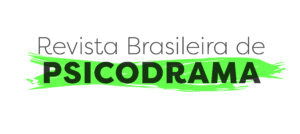Luiza Lins Araújo Costa, Doutora em Psicologia Social pela Universidade Federal da Paraíba (UFPB), Psicóloga clínica com especialização em Psicodrama pela PROFINT, Aracaju, SE, Brasil.
 The article Psychodrama with children within the autistic spectrum disorder: a possible experience?, published in Revista Brasileira de Psicodrama (vol. 30), presents an experience of psychodramatic psychotherapy with an eight-year-old child within ASD.
The article Psychodrama with children within the autistic spectrum disorder: a possible experience?, published in Revista Brasileira de Psicodrama (vol. 30), presents an experience of psychodramatic psychotherapy with an eight-year-old child within ASD.
Although children diagnosed with ASD exhibit a full range of intellectual and language skills, they often share behavioral manifestations accompanied by deficits in three areas: (a) social and interaction skills; (b) communicative skills (verbal and non-verbal); and (c) patterns of restricted, repetitive, and stereotyped behavior, interests, and/or activities (American Psychiatric Association, 2014).
As psychodrama is an approach that promotes care through action, with the training of spontaneity, creativity and sensitivity and the help of resources such as games and dramatization techniques (Lopes & Dellagiustina, 2017). in this study, the question is: why not take advantage of the potential of the approach also for the care of children with ASD?
In the case in question, the child had an atypical neurodevelopment, identified since the age of four, with repetitive patterns and difficulties in interpersonal relationships. The author started from the notion that psychodramatic psychotherapy could help to overcome some obstacles of the child through dramatic representation, identifying, exploring, and expanding their roles, as the child is constituted through the roles they play (Filipini, 2014).
During the initial sessions, there was a lot of resistance in the interaction, requiring time, patience, and creativity to work on the characteristics of the diagnosis that affected communication. The first interactions, for example, took place through improvised singing.

Image: Freepik.
With the strengthening of the bond and the construction of a relationship of trust, the child began to dramatize more easily, presenting his feelings, difficulties, and relationships. Over time, role playing, and spontaneity training promoted improvements in the child’s social and communication skills in other contexts, such as at school.
Although this research presents results from only one experience, it reveals the fact that the possibilities for intervention and health promotion within ASD are diverse and psychodrama can contribute to this care, especially because this approach can reduce the conserved responses and potentiate unprecedented and creative responses.
The interventions were carried out not only based on psychodrama assumptions, but in an interface with psychiatry, considering diagnostic criteria, etiology and coping strategies. In addition, the sessions with the child’s mother were fundamental, as they provided more intensive stimulation and greater understanding of the contents that emerged in each session.
Is it worth noting that the interventions were not based only on psychodrama assumptions, but on an interface with psychiatry, considering diagnostic criteria, etiology and coping strategies.
In addition, the sessions with the child’s mother were fundamental, providing more intensive stimulation and greater understanding of the contents that emerged in each session.
For future studies, we suggest more psychodramatic-based studies, especially from an intervention perspective with caregivers of children within ASD, as there is still very little discussion about the importance of caring for those who care.
For all that, this study is not just about psychodrama, or a clinical case with a psychodramatic basis. This is an article about diversity in care and the importance of promoting multiple and diverse interventions in the face of an equally multiple and diverse diagnosis.
Furthermore, the wide dissemination of information on the subject can promote changes in children’s access to their rights and greater awareness within society. So, be warned: we need to talk about diversity, about respect and care for more than 2 million people diagnosed in Brazil, we need to talk about ASD.
Next, watch the video by Luiza Lins Araújo Costa bringing additional information about the research.
References
AMERICAN PSYCHIATRIC ASSOCIATION. Manual diagnóstico e estatístico de transtornos mentais: DSM-5. Porto Alegre: Artmed, 2014.
FILIPINI, R. Psicoterapia psicodramática com crianças: Uma proposta socionômica. São Paulo: Ágora, 2014.
LOPES, I., and DELLAGIUSTINA, M. Psicoterapia infantil mediada por contos infantis: Estudo de caso na perspectiva do Psicodrama. Revista Brasileira de Psicodrama [online]. 2017, vol. 25, no. 01, pp. 28–37 [viewed 00]. https://doi.org/10.15329/2318-0498.20170004. Available from: http://pepsic.bvsalud.org/scielo.php?script=sci_arttext&pid=S0104-53932017000100004&lng=pt&nrm=i&tlng=pt.
To read the article, access
COSTA, L.L.A., DINIZ, F.C.R. and VIANA, S.M.J. Psychodrama with children within the Autistic Spectrum Disorder: a possible experience? Revista Brasileira de Psicodrama [online]. 2022, vol. 30, e1722, ISSN: 2318-0498 [viewed 00]. https://doi.org/10.1590/psicodrama.v30.583. Available from: https://www.scielo.br/j/psicodrama/a/cGy9mq8GPfT7gsWpYbg44Yy/abstract/?lang=en
External links
PROFINT: https://www.profint.com.br/
Revista Brasileira de Psicodrama: https://www.revbraspsicodrama.org.br/rbp
Revista Brasileira de Psicodrama – Instagram: https://instagram.com/revistabraspsicodrama
Revista Brasileira de Psicodrama – PSICODRAMA: https://www.scielo.br/j/psicodrama/
Como citar este post [ISO 690/2010]:


















Recent Comments